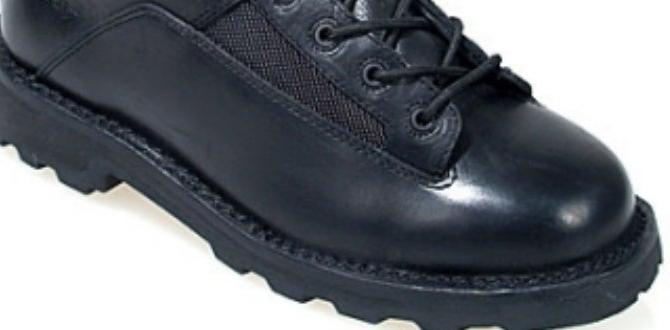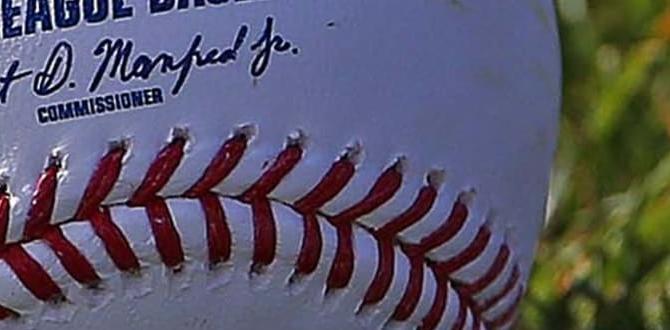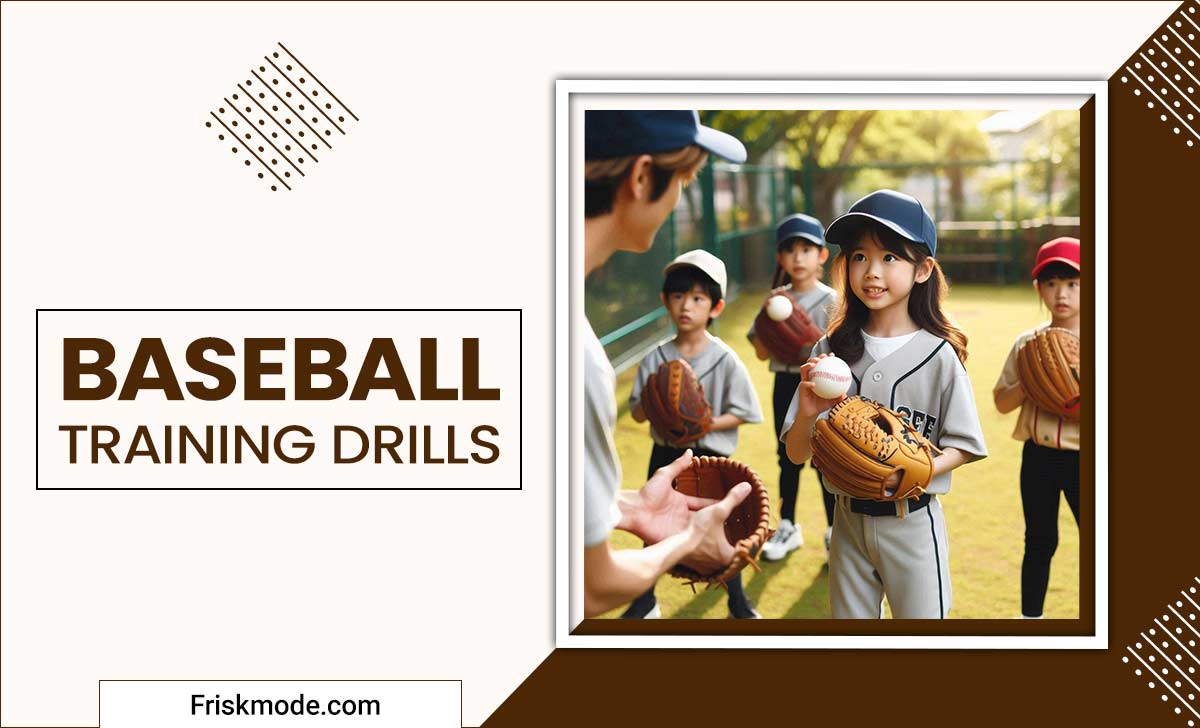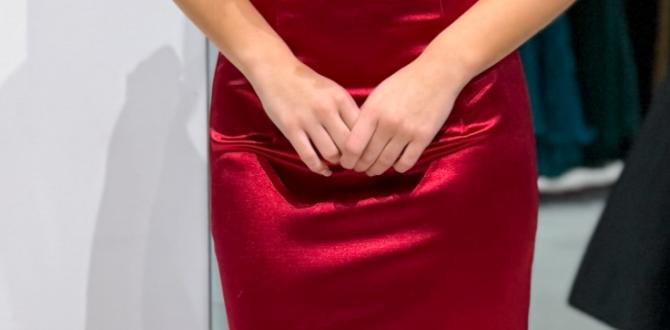A quick summary for you: Essential equipment for stretching exercises can significantly enhance your flexibility and prevent injuries. Simple items like yoga mats, resistance bands, and foam rollers are highly effective for beginners and seasoned athletes alike, making your stretching routine safer and more productive.
Getting ready to stretch? Awesome! Stretching is super important for baseball players – it helps you throw harder, run faster, and stay injury-free. But sometimes, you might feel a bit lost on what gear actually helps. Don’t worry, it’s not complicated! We’re going to break down the basic equipment that can make your stretching sessions way more effective. Think of it as leveling up your warm-up game. We’ll cover everything you need to get started, from comfy mats to bands that give your stretches that extra oomph.
Why the Right Stretching Equipment Matters
You might be thinking, “Can’t I just stretch on the floor?” And yes, you absolutely can! But adding a few key pieces of equipment can make a world of difference. It’s not about needing fancy stuff; it’s about making your stretching safer, more comfortable, and more impactful.
For anyone on the baseball diamond, from pitchers perfecting their wind-up to outfielders tracking fly balls, flexibility is gold. Tight muscles can lead to strains, sprains, and just plain poor performance. The right gear helps you achieve deeper stretches, target specific muscle groups, and improve your range of motion safely. It’s like having a personal trainer helping you out, ensuring you get the most bang for your buck with every stretch. Plus, it can make the whole experience much more enjoyable!
Essential Equipment for Stretching: Your Go-To Gear
Let’s dive into the gear that will become your best friends in your flexibility journey. These are the items that are worth investing in, whether you’re a beginner just starting out or an experienced player looking to fine-tune your routine.
1. The Foundation: Yoga Mats and Exercise Mats
This is probably the most fundamental piece of equipment. A good mat provides a stable, comfortable, and hygienic surface for your stretches.
Why you need it:
Cushioning: Protects your joints (knees, elbows, hips) from hard surfaces like tile or wood floors.
Grip: Prevents slipping, especially when you start to sweat, which is crucial for safety.
Hygiene: Provides a personal space that’s easy to clean, keeping you away from germs.
Portability: Most mats are lightweight and can be easily rolled up and taken to the field, gym, or park.
Types of Mats:
Yoga Mats: Generally thinner, offering a good balance of cushioning and stability. They often have excellent grip.
Exercise Mats: Can be thicker and offer more padding, ideal for exercises that require more kneeling or lying down.
Tumbling Mats: Thicker still, offering maximum cushioning but less portability.
What to look for:
Thickness: 3mm to 6mm is usually a good range for general stretching and flexibility work.
Material: Look for materials like TPE, PVC, or natural rubber for good grip and durability. Avoid mats that feel too slick.
Size: Ensure it’s long and wide enough for you to comfortably lie down and move around.
For baseball players, a mat is essential for pre-game stretches on the grass or post-game cool-downs. You can find great, durable mats from brands like Lululemon, Gaiam, or Amazon Basics, many of which come with carrying straps.
2. Adding Resistance: Resistance Bands
Resistance bands are incredibly versatile and one of the most cost-effective pieces of equipment you can get. They add a gentle or significant challenge to your stretches, helping to improve muscle strength and joint mobility.
Why they are great:
Versatility: Can be used for a vast array of stretches and strength exercises to target almost any muscle group.
Progressive Overload: Available in different resistance levels (light, medium, heavy), allowing you to gradually increase the challenge as you get more flexible and stronger.
Portability: They take up minimal space and are super lightweight, perfect for packing in your baseball bag.
Injury Prevention: Help to activate and strengthen muscles that support joints, reducing the risk of strains.
Types of Resistance Bands:
Loop Bands (Mini Bands): Small, continuous loops. Excellent for activating glutes, hips, and for gentle leg stretches.
Therapy Bands (Long Bands): Long, flat, continuous bands. Ideal for assisted stretching, flexibility exercises, and strength training where you need to loop them around your feet or equipment.
Tube Bands with Handles: Classic resistance bands with handles on each end. Great for a wider range of strength and stretching exercises.
What to look for:
Resistance Levels: Start with a set that includes multiple resistance levels so you can find what works for different stretches.
Durability: Look for high-quality latex or rubber that won’t snap easily. Reputable brands include Rogue Fitness, TheraBand, and WODFitters.
Comfort: If you’re getting tube bands with handles, ensure the handles are comfortable to grip.
Check out resources like the National Institutes of Health (NIH) for research on the effectiveness of resistance training for improving physical function.
3. Deep Tissue Release: Foam Rollers
Foam rolling, also known as self-myofascial release, is a fantastic way to work out muscle knots and tightness. It’s like a massage but one you can do yourself, right before or after stretching.
Benefits for stretching:
Loosens Tight Muscles: Helps to release tension in muscles like the hamstrings, quads, and back, allowing for a deeper and more effective stretch.
Improves Blood Flow: Increased circulation aids muscle recovery and can make muscles feel more pliable.
Reduces Soreness: Can help alleviate post-exercise muscle soreness (DOMS).
Enhances Range of Motion: By breaking up adhesions (knots), foam rolling can directly improve how far you can move a joint.
Types of Foam Rollers:
Smooth Foam Rollers: Best for beginners or those with less intense muscle tightness. Offer gentler pressure.
Textured/Knobbed Foam Rollers: Designed with bumps and ridges to target specific trigger points more intensely. Think of them as having “nodes” for deep tissue work.
Density: Lower density rollers are softer and less intense, while higher density ones are firmer and provide deeper pressure.
What to look for:
Density: A medium-density roller is often a good starting point.
Surface: Smooth for general use, patterned for deeper work.
Size: Standard 36-inch rollers are common, but shorter 12-18 inch ones are more portable.
Brands like Trigger Point, OPTP, and AmazonBasics offer a good range of foam rollers. Remember, foam rolling can be tender, especially at first. Start slow and don’t overdo it.
4. Elevating Your Stretches: Yoga Blocks and Straps
These simple tools might seem small, but they can be game-changers for making stretches more accessible and deeper for everyone. They help bridge the gap between where you are and where you want to be in a stretch.
Yoga Blocks
How they help:
Support: Bring the floor closer to you, reducing strain and making poses more achievable. For instance, a block under your hand in a forward fold can help you maintain a straight back.
Depth: Can be used to prop up a limb, allowing for a more intense stretch in another area.
Stability: Provide a stable base, helping you hold stretches longer and with better form.
What to look for:
Material: Foam blocks are lightweight and slightly forgiving. Cork or wood blocks are firmer and more stable but heavier.
Size: Standard blocks are about 9″ x 6″ x 4″, but variations exist.
Yoga Straps
How they help:
Reach: Extend your reach, allowing you to grasp limbs or the floor that you might not otherwise be able to. This is fantastic for hamstring and shoulder stretches.
Assisted Stretching: Help you hold a stretch with gentle, consistent tension, preventing muscle backlash.
Alignment: Can help guide your body into proper alignment, ensuring you’re stretching the right areas safely.
What to look for:
Length: 6-foot or 8-foot straps are most common and versatile.
Buckle Type: D-ring buckles are standard and easy to adjust.
Brands like Manduka, Hugger Mugger, and Bean Products offer quality blocks and straps.
| Equipment | Primary Use in Stretching | Best For Beginners | Key Benefit for Baseball |
|---|---|---|---|
| Yoga Mat | Comfort, grip, hygiene | Yes, essential for floor work | Injury prevention during warm-ups/cool-downs |
| Resistance Bands | Adding tension, assisted stretching, mobility work | Yes, various resistance levels | Improved range of motion, muscle activation |
| Foam Roller | Deep tissue release, muscle recovery | Yes, start with low-density/smooth | Faster recovery, reduced stiffness |
| Yoga Blocks | Support, stability, making stretches accessible | Highly recommended | Proper form, deeper engagement |
| Yoga Straps | Extending reach, assisted stretching | Very helpful for tight areas | Increased flexibility in hard-to-reach areas |
5. Staying Hydrated: Water Bottle
This might seem obvious, but it’s critical! Proper hydration is key for muscle function and flexibility. Dehydrated muscles are more prone to cramps and injury.
Why it’s essential:
Muscle Function: Water is vital for muscle contractions and flexibility.
Performance: Dehydration can quickly lead to fatigue and reduced performance.
Recovery: Aids in flushing out toxins and delivering nutrients to muscles.
What to look for:
Insulated bottles: Keep your water cool during long practices or games.
Durable materials: Stainless steel or BPA-free Tritan plastic are great options.
Size: Choose a size that fits your needs – 24-32 oz is usually sufficient for a stretching session.
Brands like Hydro Flask, Contigo, and Nalgene are reliable choices.
6. Tracking Progress: A Gym Timer or App
While not strictly “stretching” equipment, having a timer can help you structure your sessions effectively. Holding stretches for the right duration is important for gaining flexibility.
How it helps:
Consistency: Ensures you’re holding stretches for the recommended time (often 20-30 seconds for static stretches).
Structure: Helps you move smoothly between different stretches and sets.
Interval Training: Useful if you’re incorporating dynamic stretching involving intervals.
What to look for:
Simple App: Many free apps on your phone can function as a timer.
Interval Timer Apps: Great for more structured routines.
Basic Digital Timer: If you prefer a standalone device.
Many sports performance websites offer free downloadable interval timers or workout plan templates.
Putting It All Together: Sample Stretching Routine with Equipment
Let’s imagine a quick post-game cool-down routine for a baseball player using some of this gear.
Objective: Improve hamstring flexibility and reduce lower back tightness.
1. Foam Roll Hamstrings: (5 minutes)
Sit on your mat with a foam roller placed under your hamstrings.
Slowly roll from your knee up to your glutes.
When you find a tender spot, hold for 20-30 seconds until the tension eases. Use your hands to help support some weight if needed.
2. Static Hamstring Stretch with Strap: (2 minutes per leg)
Lie on your mat on your back.
Loop a yoga strap around the ball of one foot.
Keep your other leg extended on the mat.
Gently pull the strap to lift your leg towards the sky, keeping your knee as straight as possible.
Hold for 30 seconds, breathing deeply. Repeat 2-3 times.
3. Standing Quad Stretch: (1 minute per leg)
Stand tall on your mat.
Hold onto a stable object (like a dugout fence or wall) for balance if needed.
Bend one knee and grab your ankle with your hand, gently pulling your heel towards your glutes.
Keep your knees close together and your back straight.
Hold for 30 seconds, then switch legs.
4. Child’s Pose: (1 minute)
From a kneeling position on your mat, sit back on your heels.
Fold your torso forward, resting your forehead on the mat.
Extend your arms forward or rest them alongside your body.
Breathe deeply and relax your entire body.
This routine is simple, effective, and uses just a few key pieces of equipment to maximize benefits.
Frequently Asked Questions About Stretching Equipment
Q1: What is the most important piece of equipment for stretching?
For comfort and safety, a good yoga or exercise mat is the most important starting point. It provides cushioning and grip, making any stretching exercise more enjoyable and secure.
Q2: Do I really need resistance bands if I’m just trying to get more flexible?
Yes! Resistance bands can actually help you improve flexibility by providing gentle tension that helps your muscles relax into a stretch, and they’re great for active mobility work that prepares your body for activity.
Q3: How often should I use a foam roller?
You can foam roll before stretching to loosen up muscles or after a workout for recovery. Aim for 2-3 times per week, or as needed for muscle soreness. Listen to your body; if it’s too painful, reduce the pressure or frequency.
Q4: Are expensive brands of stretching equipment necessary?
Not at all! While premium brands often offer better durability and features, there are many excellent, affordable options available from well-known retailers and online marketplaces that work just as well for beginners.
Q5: Can I use my stretching equipment for other exercises?
Absolutely! Most stretching equipment, like resistance bands and foam rollers, are also fantastic for strength training, rehabilitation, and general fitness exercises. A good mat is always useful for floor-based workouts.
Q6: How do I clean my stretching equipment?
Always check the manufacturer’s instructions. Generally, mats can be wiped down with a damp cloth and mild soap or a specialized mat cleaner. Resistance bands





